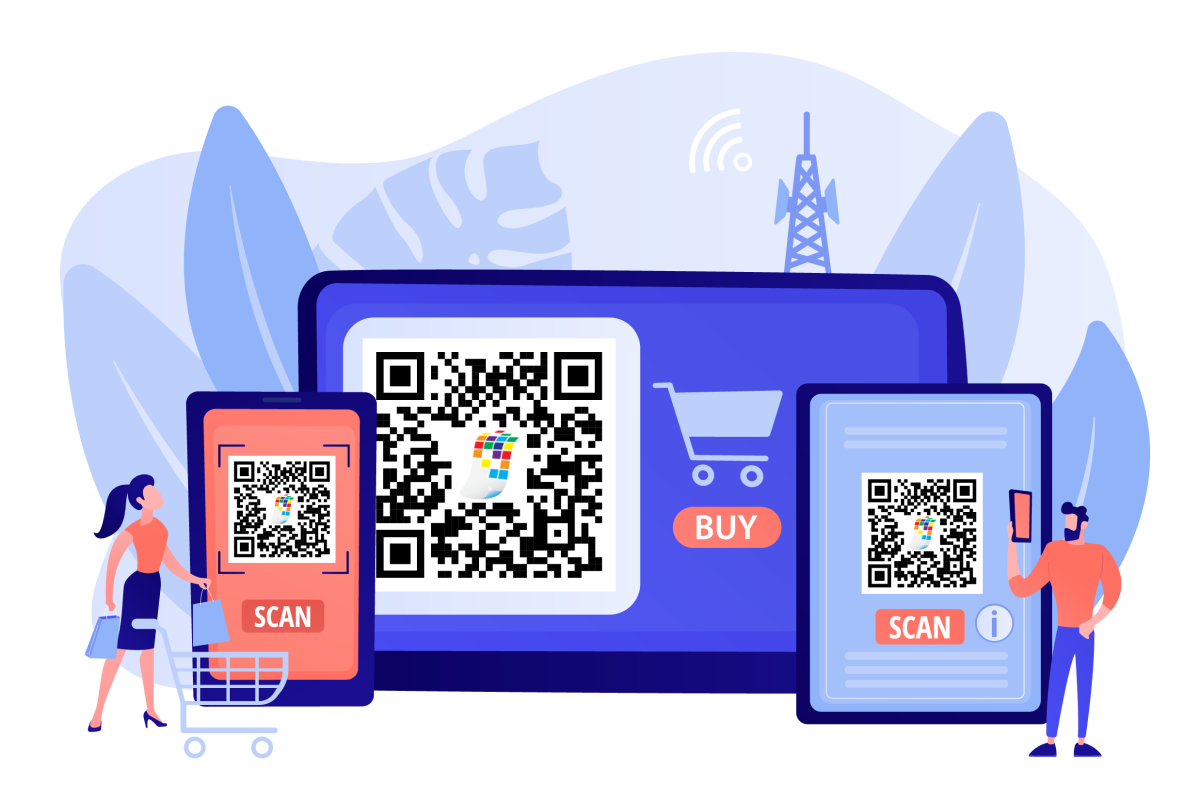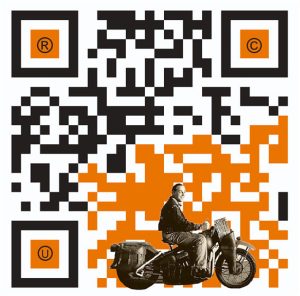

Use our online designer studio to create your own personalised flyers, business cards, greeting cards and more.
Order NowWhen it comes to professional printing and advice on your business marketing, we are the team to call! You can call us direct on 04 568 8773 or fill in our quote form.
Request a Quote
You’ve all seen QR Code now, be it on real estate signs or via the Covid Scanning App, but do you know what they are? In this short article I’ll be looking at the origin of QR Codes, the difference between them and barcodes, what they can do, and how you can use them in your business.
Quick Response Code (QR Code) was created by the Japanese automotive company Denso Wave to track parts in an easy machine readable form on automotive production lines. The grid design was used as it allows a machine to read it in any orientation, which traditional barcodes have an issue with. One of the more interesting features of it is that it’s not a fixed design, limited to a number of characters or digits but allows for a flexible sizing to meet the type and amount content stored within it. Denso Wave has not locked the system to a proprietary standard, which requires payment of licensing fees, leading to the format being quickly adopted world wide for the storage of digital information in a printed format. Denso Wave does own several key patents to it but has chosen not to enforce or has waved some of them to ensure that the technology becomes widespread.
Being open to anyone to use means that there were many updates and changes to allow for new types of content to be stored in new and interesting ways. It also allows for basic tracking of how it’s being used depending how the code contents were setup during creation. What makes it more useful, apart from it being basically free to use, is that it has a much higher error correction rate, so if part of it is damaged it’s still readable. This has led to the format having some fun additions to the design that allow to really personalise the code in memermable ways which we will talk about later. Both creating and reading a QR Code is extremely quick and simple these days, with most people having access to a reader via a phone app, and websites like our own having QR Code generators. We will cover creating one in a later section.
Because of its flexibility there is a wide range of ways that you can use a QR Code. However most fall into the following basic types.
Now you will see sites talk about also generating social media links, accessing things like music and videos, coupon codes, use paypal, even bitcoin. The reality is that they are just using url links or plain text so you can do it too without the need of an expensive expert.
Beyond the standard QR Code ranges there are such things as Secure QR Codes which encryption codes to ensure that only authorised systems can translate the data. Frame QR allows for the use of colour graphics within the code to allow you to personalise the code by giving it a human understandable component. There are even variations that use different coloured dots to encode even more data within the QR grid, but these systems are not widely used and fall outside the scope of this article.
There are several differences between a QR Codes and a Bar Codes. Most barcodes you see are on product packaging so they are one of the various UPC or EAN codes, where a central authority controls the distribution of these numbers. You have to pay a licence fee for one or more of these codes which then belong to you and no one else can use it. You have no control over the number itself; you are just issued the next available number or numbers. There are many different variations of the code depending on the region of the world the product is registered in. Barcodes are more restricted in the content they can carry, mostly a string of numbers though there is a version that carries text too. (We have open sourced versions of those barcodes available as fonts in our online studio software.) They also aren’t as damage resistant as QR codes since they were designed for much more limited technology of the 1970’s so didn’t want to tax the systems with complex error checking.

To make your printed material digital. QR Codes are great for situations where you want people to jump to a unique web page or post on a social media site. Just put in that url in the generator and paste the graphic in a flyer. We’ve always said that your business card is your first bit of marketing so why not use it to make it easy for people to add you to their phone contact list, which in this day of cloud based systems like automatically add you to their email address book too. For the average consumer, most will never type out some long web address just to see some marketing material or promotion, especially if it’s on their phoneIf you are like me, I get put off filling in some long web address on my phone just to be able to access some webpage; but a QR Code that’s a single app click and a snap away, they are more likely to given how use to it everyone is now.
If you use our online design studio software, we have QR Code creation built right in as part of the toolset. Hit the ‘Image’ button, ‘import an image’, select ‘QR Code’, then add a ‘QR Code’ and choose the type and fill in the blanks. Now we admit it’s basic because we don’t want to overwhelm you with all the options out there.
There are several online sites that let you generate most of the common formats of QR Codes for free and download a graphic for you to use. (We’ll link a couple of places at the end of this article.) From there you can start getting into the more interesting options for QR Codes, such as gradient coloured dots, graphics inside of them or embedding the QR Code inside an image although not all scanning apps can read them. Also with some careful coding you can make the code change where it directs the person too based on data pulled from their phone such as date, time, and location but that again falls outside the scope of this article as we’re getting into the weeds of dynamic website content generation.
Because QR Codes are so flexible and easy to create and use, it can lead to situations where they fail due to a lack of understanding of QR Codes limitations. So here’s a few things to know before attempting to create your own.
QR Codes are practically free and easy to create. They allow for creativity and connection of physical marketing to the digital version. You can create a few general purpose ones to always have available, and have unique ones for special marketing purposes. Keep them on file and drop them in where and when you want to help people jump from your physical to your digital marketing. Use our online design studio software tools to add them in when you create marketing or have us help you by creating unique ones for your needs. Copy Express is here to help you get your business out there every way you can.
Links